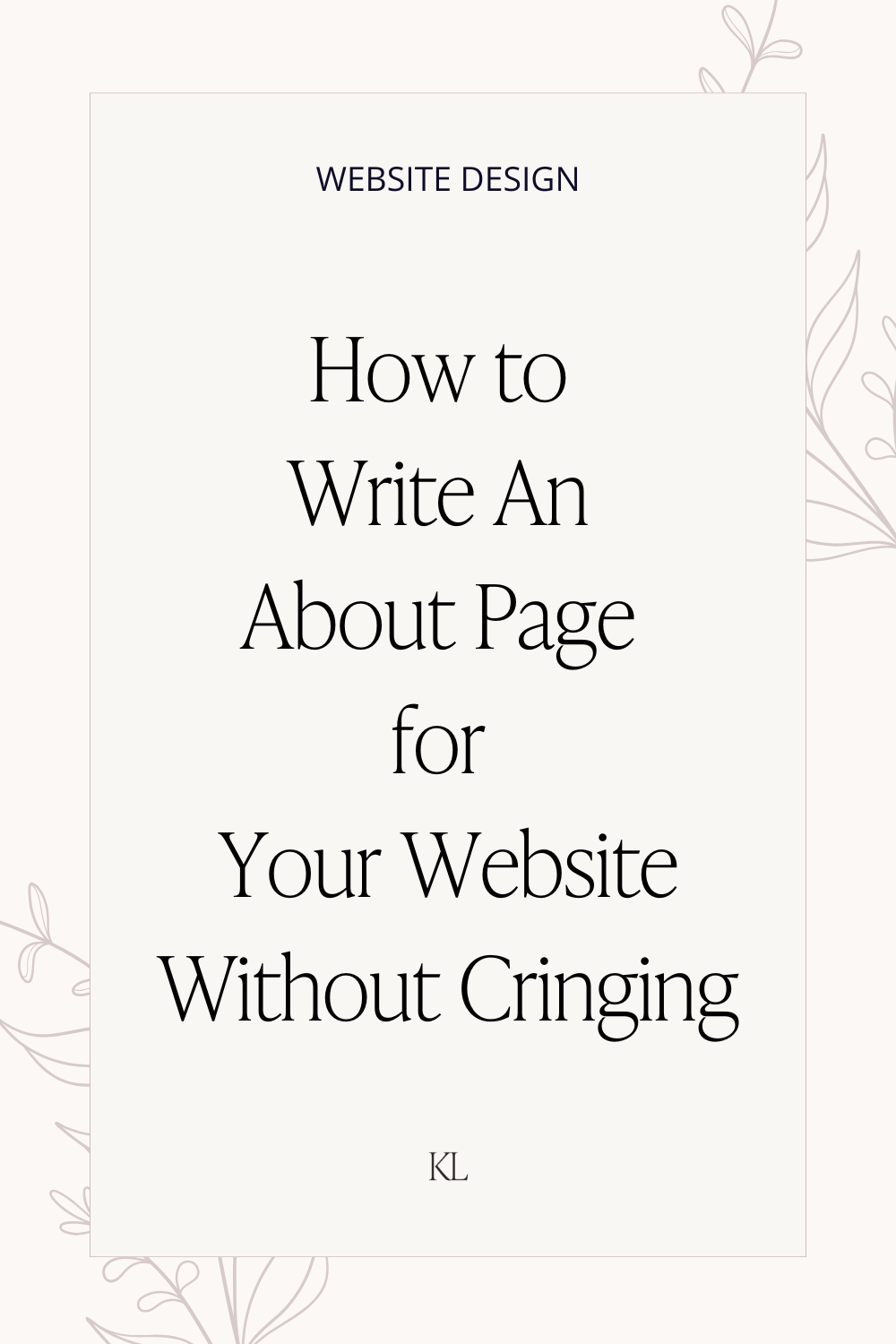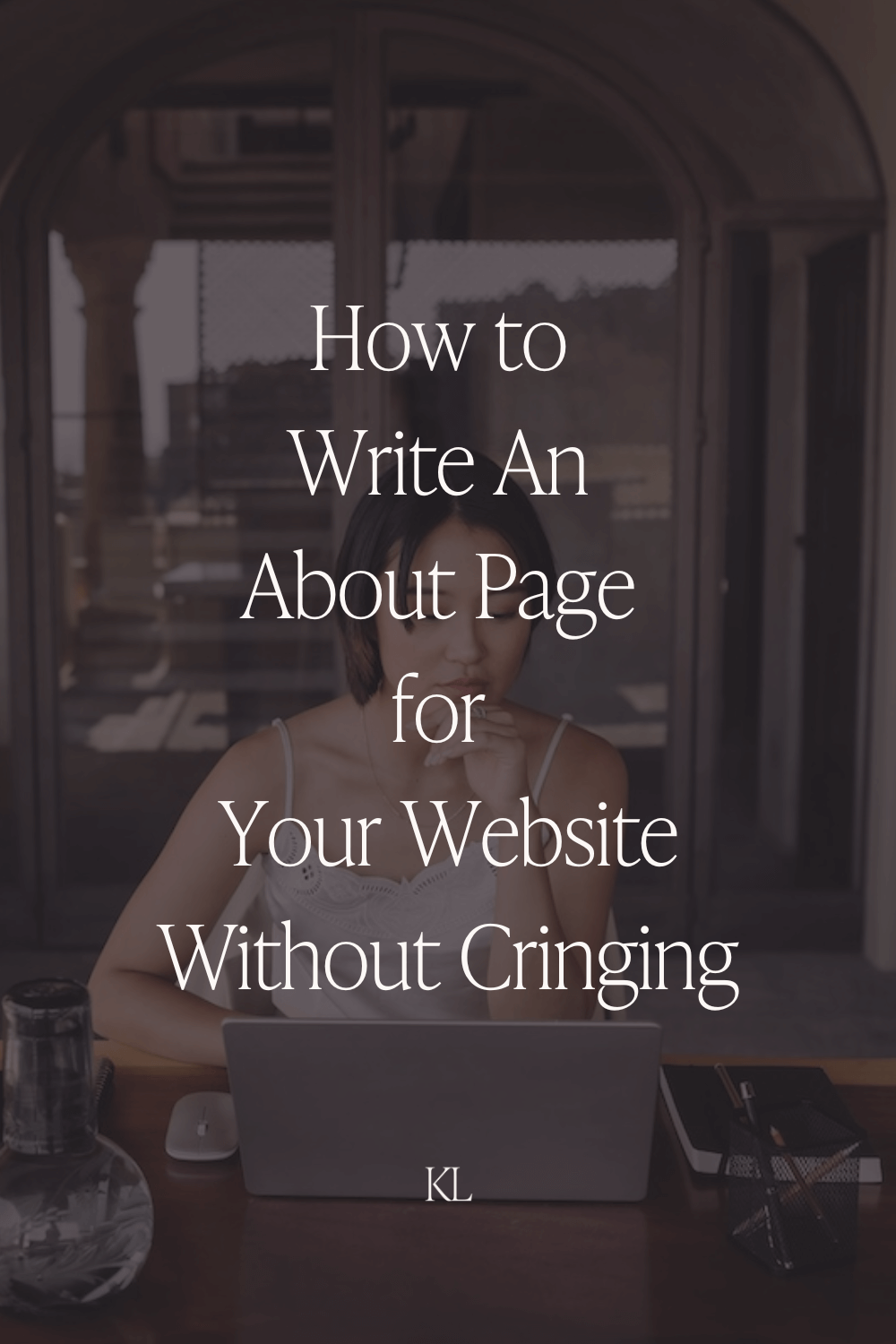How to Write An About Page for Your Website Without Cringing
The “About” page is one of the most visited pages on a website but it’s also the one that people dread writing the most. I get it - it can feel impossible to strike the right balance between confident and authentic without sounding like you’re pitching yourself on a bad dating site.
What is the purpose of an About page?
The purpose of your About page is to build trust and connection with your website visitors. It’s not just about telling your back story or listing your credentials. it’s about telling people who you are, what you do, why you do it and what makes you good at it in a way that makes them think “This is the person I want to work with”.
A well written About page typically:
Introduces you as a human being
Highlights your values and mission
Demonstrates your expertise
Builds relatability and rapport
Encourages next steps
Writing about yourself can feel a bit weird. But remembering this one thing can make it feel a little easier:
Your About page isn’t actually about you. It’s about your ideal client.
You see, your ideal client is on a journey to solve a personal problem. And you are the guide that is going to help them solve it. By continuously relating your copy back to how your services can benefit your ideal client, you are showing them how you can help them to solve their personal problem.
How to write an About Page
About pages are personal to the business owner so I don’t recommend following a cookie cutter structure. The layout and design of your About page really does depend on what you want to say and how much you want to say.
Start with a catchy headline, an introductory paragraph and a professional headshot, but after that you can layout your About page in the way that feels aligned to you and your business. I’ve put some ideas below of the things you could include on your About page. You don’t have to include them all, and you certainly don’t have to put them in the order that I’ve written them.
Headline
The headline on your About page should let your website visitors know that they’re in the right place. This is an opportunity to let your personality come through. Replace standard headlines like “About Me” or “Meet The Team” with something a bit more suspenseful. For example, a nutritionist may say “Helping you feel good in your body—no celery juice required!”
2. Introduction Paragraph - The Why
A short paragraph about what drew you to your work. Think about what frustrated, fascinated or inspired you to do what you currently do? What made you want to learn more and help others? Make this paragraph personal so your visitors can relate.
3. A professional headshot of you
Including a picture of yourself is probably the easiest way to build trust with your visitors. People are drawn to people. A headshot instantly builds trust with your website users because it humanises you. You can also communicate a lot about your brand with a headshot - whether your vibe is polished and professional, or creative and playful - the right image will portray that.
4. Your Mission and Values
Stating your mission and company values clearly will attract your ideal clients. Your mission shows the deeper purpose behind your work, and your values are what guide your decisions. When people see their own priorities reflected in your values, they are more likely to feel understood and therefore more likely to want to work with you.
5. Social Proof
Testimonials, reviews, and “as seen in” logos go a long way to building trust with any future clients and also establishing your expertise. Add in a couple of testimonials from past clients. Or if your work has been featured in relevant publications, make it known here. People are more likely to do business with you if they know that others have had a good experience and outcome with you.
6. Your Journey and Credentials
Tell the story of how your interest became your profession. Keep this casual and brief - this is not a CV - but do list any relevant credentials here as it builds trust. Also use this section to talk about how your business came to be. Is there something in your industry that frustrated you and you wanted to do differently? Mention it here. This is another point that your website visitors may be able to relate with you on.
7. Something personal
Are you a parent? Do you love hiking? Going to the beach? Baking? Write a brief sentence or two about it here. This is what makes you human. This is what your website visitors are going to find common ground with you. This is what makes you unique in the eyes of your ideal client.
8. Their Next Step
End your About page with a call to action (CTA). Whether you want your visitors to keep exploring other pages on your website, download a freebie, or book a call - encourage them to take that action here.
How to Write an About Page - The Bottom Line
The About page on your website is important for attracting your ideal clients. I know it can seem cringey to write about yourself. But if you remember that your About page isn’t actually about you - it’s about your ideal client - then you can relate everything you write back to them.
Use your About page as an opportunity to communicate what you and your business are really about. Chances are that there are several other people who offer similar services to you. So what sets you apart? This is what your About page is for.
Now that you have some ideas on what to write on your About page, why not get your homepage sorted too? Download this free Homepage Workbook that goes through all the sections you need on a homepage that converts.
Launching a Squarespace website doesn’t have to be stressful! Download my free Squarespace Website Checklist and follow the step-by-step system I use with my clients to make sure every site looks polished and professional.
Plus, check out my YouTube channel for quick tutorials to guide you through each step!
↓ Found this post useful? Pin it to Pinterest ↓



